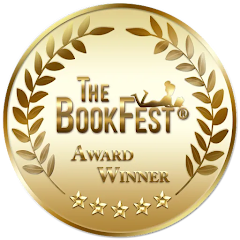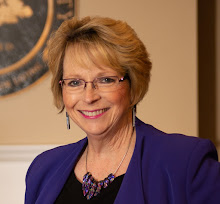I fell in love with
Frank Linderman’s work and became fascinated with the Crows or Apsaalooké Nation when I wrote my first jinni
hunter novella, Kiss of the Silver Wolf, a
paranormal romance that involved the handsome and mysterious director of a
clandestine division within a powerful government agency. Bert Blackfeather, a
hero of the Gulf War with both a Purple Heart and a Silver Star, runs Homeland
Security’s Science and Technology Directorate’s Anomaly Defense Division. His
agents vary in talents and skills, all paranormal, all outside the bureaucratic
box. The Haunting of Hotel LaBelle, takes
place in Billings, Montana and on the Crow Reservation, Bert’s home which he
returns to from time to time. I hope the following very brief introduction to
the Crow culture and history piques your curiosity and gives you a sense of the
wonder I felt as I researched and wrote my latest book.
The Name and Language
Although the origins
of the name have been argued about by scholars over time, the designation of “Raven”
and “Crow” people has been “used interchangeably since the 18th
century” (Voget, 2001). The Crow name for their tribe is Absaroke, or Apsaalooké translated variously as bird, children of
the large beaked bird, sparrow hawk, crow, raven, or anything that flies,
depending on the author and the century. The majority (85%) of the tribe speaks
Crow as their first language. Don’t be daunted! There’s an app to learn about
the Crow culture and language and it can even be downloaded
to your smart phone.
The Reservation and Little Bighorn
Like many Native
American peoples, the Crow have experienced loss of territory and lands since
Europeans arrived. Treaties were signed, broken, renegotiated and broken
again—by the White men. According to the Crow Reservation
Timeline, 38 million acres of land over which the Plains people rode and
hunted buffalo shrank to its present size of 2.3 million acres. The Crow
Reservation sits on breathtaking lands and waterways. South of the city of
Billings, the reservation borders on Wyoming. Within its boundaries is the Little Bighorn Battlefield National
Monument at Crow Agency. Crow warriors served as scouts and soldiers in
this battle, alongside General Custer’s troops in the fight against their old
enemies, the Sioux, Cheyenne and Arapaho. According to Pretty
Shield, a Medicine Woman, at least two Crow women served as warriors in
this battle, Finds-them-and-kills-them and The-other-magpie.
[A Crow Camp]
Gender Roles
A matrilineal
society, the woman owned the tipi (teepee) or lodge tent and all the household
goods. They skinned the animals, prepared food, gathered water and wood. The
men owned the horses and their weapons. If parents proposed a match to their
daughter (outside of the clan, to prevent in-breeding) based on what they
thought was a good fit, if she didn’t like the man, she could say no. There was
no formal marriage ceremony. The man offered a horse (or two) and a rifle (or
two) in exchange for his love and, if accepted, they moved in together—into the
woman’s home. Men could take more than one wife, usually the sisters of his
first wife. Men were not permitted to speak to their mother-in-law, but had to
make public announcements or talk through their wives, which in my opinion,
probably avoided a lot of conflict (Linderman, 2003; Vogt, 2001).
[Crow Mother and Child, 1900’s]
Men were hunters and
warriors, although there were some exceptions, as noted above. Another Woman
Warrior, whom some thought was not real until further research by Denig
indicated she truly existed is Pine Leaf. Captured in a raid on the Gros Ventre
as a ten-year-old child by the Crow, Woman Chief Pine Leaf grew up to be a
powerful warrior and chief. To become a chief a Crow warrior had to “count coup”,
by doing one of the following four things: striking an enemy with a bare hand
or stick without killing him, leading a successful raid, stealing horses from
an enemy camp, or grabbing a bow or gun in hand-to-hand combat.
Two-Spirit People
are those individuals who don’t fit into a neatly assigned gender role, but
instead are on a continuum of gender. Native Americans have a more fluid
approach to gender, with some tribes describing four or more genders. Based on Pretty Shield’s
description (noted above) and other extensive historical documentation, Finds-them-and-kills-them also known as Osh-tisch,was a two-spirit
person, a male who dressed as woman. Two-spirit people were considered
highly spiritual and were accepted by the Crows.
Spiritual Beliefs
Contrary to early
European settlers’ misperceptions, the Crow believe in a Supreme Power who is
responsible for all life. Since the Crow worshipped and pray in a different
manner from the Europeans, this monotheistic belief was lost in translation. A
young man or woman will seek guidance from the spirit world by fasting and
going out alone in the wilderness to sacred spaces. A successful vision quest
will provide the seeker medicine dreams. Animals, birds, or persons are often
part of these dreams. In the case of Chief Plenty Coup, the Chief of Chiefs,
The Dwarfs, or Little People, appeared to guide him when he was nine years old.
They adopted him and instead of giving him a medicine bundle, gave him advice
which made him wise and helped him to become a great leader (Linderman, 2002).
[Chief Plenty-Coups, 1880]
Death and Mourning
Historically, when
someone died, the Crow women and men cut themselves, lacerating arms, legs,
even puncturing their heads. They cut their long hair, one of the Crow people’s
greatest pride, to reflect their suffering and loss. Once someone has died, his
or her name was not spoken, and they were Beings without Bodies. The departed
move to the hereafter, or the “camp beyond.” Historically, Crow burial customs
included wrapping the deceased in his finest clothing and blankets and placing
them on Hulishoopiio or scaffolds. When the body fell from the scaffold, it
would be covered with rocks. Or the body was placed in an Ashalaxxo, or lodge,
which is closed up with all their belongings inside and their animals let
loose. After the Crow were placed on the reservation, scaffolds on the plains
were not an option, so a Balaxoo, or a Tree-Resting Place was used. Again, if
the body fell, it was covered with boulders and rock. And, bodies were placed on
Rock Ledges and in Crevices during the Smallpox Epidemic of 1843, after the US
Army knowingly distributed blankets and rations contaminated with the
contagious disease.
[Burial Scaffold, 1908]
Animals, Patrons, Spirits and Shapeshifting
The Crow have sacred
and spiritual connections to the animals in their lives. They are seen in
vision quests and visitations and have special significance when they appear as
patrons with special powers. The most sacred animal is the buffalo, the beautiful
creature that gave the tribe everything from food to shelter. Like the buffalo,
the eagle is the most sacred bird and along with falcons and hawks they are
considered spirit patrons. As an aside, because of the spiritual association
with these birds, eagle and hawk feathers can only be owned by Native Americans.
Wolves were domesticated as pups, but were not treated as common dogs. They
were respected, and human scouts were called “wolves” in honor of this animal.
Coyotes were considered friends and the coyote’s call was used to communicate
among warriors on a raid. The elk gave food, but were also mystical and could
transform themselves into women, as could white tail deer. Mink were considered
treacherous and could transform into women, bewitching and leading men astray.
This is a short list of the animals in Crow life. For a longer list with a description
of roles, go to the Crow
Indian Tribe Culture and History Resources Report of 2002.
[Buffalo, 1902]
Want More?
Thanks to the hard
work of Frank B. Linderman in the late 1920s, the world has a written history
of the Apsaalooké, or Crow Nation, a
traditionally oral culture. As a young man, Linderman became entranced with the
West and moved out there to become a hunter and trapper. Over time, Native
Americans befriended him and began to tell their stories to him in sign
language and through interpreters. The Crows called him the Great Sign Talker
and Pretty Shield said he made books speak. Almost a century later, his work
crackles with life and takes the reader on breathtaking journeys into another
world and another time. If you have not read his books and are interested in
Native American stories, biographies, and autobiographies, please see my list
of resources below. I recommend beginning with Pretty Shield: Medicine Woman of the Crows and Plenty-Coups: Chief of the Crows. Pretty Shield’s granddaughter,
Alma Hogan Snell, offers us more contemporary perspectives with her books, Grandmother’s Grandchild: My Crow Indian
Life and A Taste of Heritage: Crow
Indian Recipes and Herbal Medicines. I hope you enjoy the story.
Here are some additional resources if you are interested in this topic.
Crow Indian Tribe
Culture and History Resources Report. (2002). http://www.blm.gov/style/medialib/blm/mt/field_offices/miles_city/og_eis/crow.Par.35536.File.dat/history.pdf
Crow Reservation
Timeline: Crow Tribe, March 2010 http://opi.mt.gov/PDF/IndianEd/IEFA/CrowTimeline.pdf
Denig, E.T. (1961). Five Indian Tribes of the Upper Missouri: Sioux, Arickaras,
Assiniboines, Crees, Crows. Norman, OK: University of Oklahoma Press.
Montana Office of
Indian Affairs: Crow Nation. https://tribalnations.mt.gov/crow
Linderman, F.
(2002). Plenty-Coups: Chief of the Crows.
Lincoln, NE: University of Nebraska Press.
Linderman, F.
(2003). Pretty Shield: Medicine Woman of
the Crows. Lincoln, NE: University of Nebraska Press.
Little Bighorn
Battlefield, National Park Service https://www.nps.gov/libi/index.htm
Library of Congress
Images http://www.loc.gov/pictures/search/?q=crow%20indians%201900-1910&st=gallery&sg=true
McGinnis, Anthony R.
Counting Coup and Cutting Horses: Intertribal Warfare on the
Northern Plains, 1738–1889. Evergreen CO: Cordillera Press, Inc.,
1990. In Wishart, D.J. (Ed.) Encyclopedia of the Great Plains. http://plainshumanities.unl.edu/encyclopedia/doc/egp.war.013
Pretty Shield’s
Story of the Battle (transcribed from Linderman’s work, Pretty Shield) http://www.astonisher.com/archives/museum/pretty_shield_big_horn.html
Snell, A. H. (2001).
Grandmother’s Grandchild: My Crow Indian
Life. Lincoln, NE: University of Nebraska Press.
Snell, A. H. (2006).
A Taste of Heritage: Crow Indian Recipes
and Herbal Medicines. Lincoln, NE: University of Nebraska Press.
Vogt, F.W. (2001).
Crow. In Sturtevant, W.C. (Ed.) Handbook
of North American Indians. Washington, D.C.: Smithsonian Institution, pp.
695-717.
Weiser-Alexander, K.
(2015). Frontier Slang, Lingo & Phrases. Warsaw, MO: Legends of America.





















































No comments:
Post a Comment